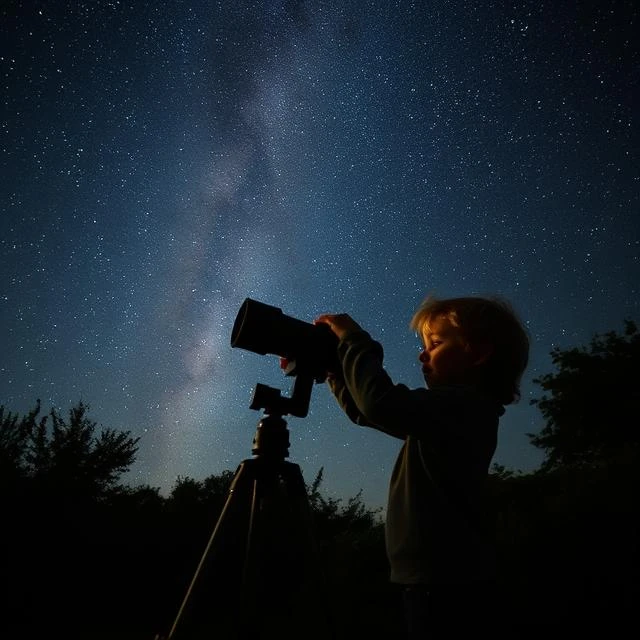
Have you ever looked at the starry sky and wondered how astronomers manage to see galaxies millions of light-years away? Telescopes are like giant eyes that can capture much more light than ours. It’s a bit like your eyes being small glasses of water, while a telescope is a huge basin collecting a vast amount of light droplets from space.
N.B.:
A light-year is the distance light travels in one year, about 10 trillion kilometers (easier to remember). For example, the closest star to the Sun, Proxima Centauri, is 4.24 light-years away from us.
To see very far into the sky, a telescope uses two magical tools: mirrors and lenses. These elements have a special power: they direct and gather light to form a clear and magnified image, much like a magnifying glass that focuses the Sun’s rays.
In an astronomical refractor, light passes through glass lenses that make it converge at a precise point. In a reflecting telescope, light bounces off a large shiny surface before being sent to a small mirror, then to your eye or a camera.
The larger the mirror or lens, the more light the telescope can capture. That’s why professional telescopes have enormous mirrors, some up to 10 meters in diameter!
On Earth, there are sometimes clouds or mist that prevent us from seeing clearly. Moreover, the atmosphere (the air around our planet) is like a veil that moves with the wind, constantly distorting the light from stars, like when you look at a pebble at the bottom of a river and it seems to dance. As a result, images of stars are blurry.
In space, there is no air or clouds! Telescopes like Hubble or James Webb can see far. There are several types of telescopes that observe different kinds of light from space.
The universe emits much more than visible light (the kind our eyes perceive). Telescopes are designed to capture other types of light (radio waves, infrared, X-rays, etc.), invisible to the naked eye.
Some telescopes, like James Webb, combine several types of light to provide even more complete images of the universe!
| Type of telescope | What is it for? | Famous example | Mirror (or antenna) size |
|---|---|---|---|
| Optical telescope | Observes visible light, like our eyes. Perfect for seeing planets, stars, and galaxies. | Hubble (in space) | 2.4 meters in diameter |
| Radio telescope | Captures radio waves emitted by distant objects, such as black holes or galaxies. | ALMA (in Chile) | Up to 12 meters per antenna (66 antennas in array) |
| Infrared telescope | Detects the heat of celestial objects, even those hidden by dust. Ideal for studying forming stars. | James Webb (in space) | 6.5 meters in diameter (segmented mirror) |
| Ultraviolet telescope | Studies ultraviolet light, often emitted by very hot stars or star explosions. | GALEX (satellite) | 50 cm in diameter |
| X-ray telescope | Observes ultra-energetic phenomena, such as black holes or supernovas. | Chandra (in space) | 1.2 meters in diameter (cylindrical mirrors) |
| Gamma-ray telescope | Tracks gamma rays, produced by the most violent events in the universe, such as star collisions. | Fermi (satellite) | No mirror (electronic detectors) |
N.B.:
The first astronomical telescope was invented by Galileo (1564-1642) in 1609. With his modest instrument, which had two lenses about 4 to 5 centimeters in diameter, he discovered the mountains of the Moon, the satellites of Jupiter, and the phases of Venus, revolutionizing our view of the universe.